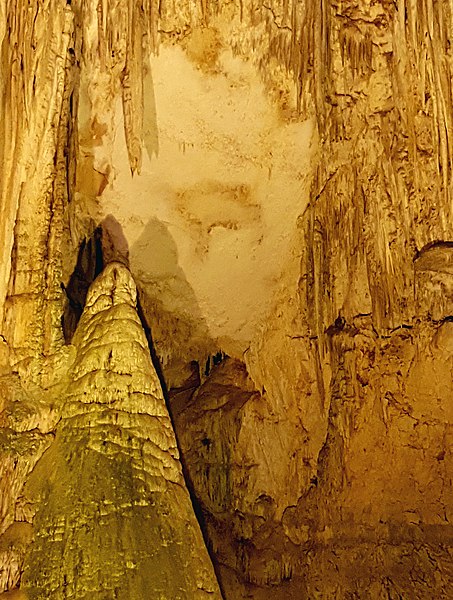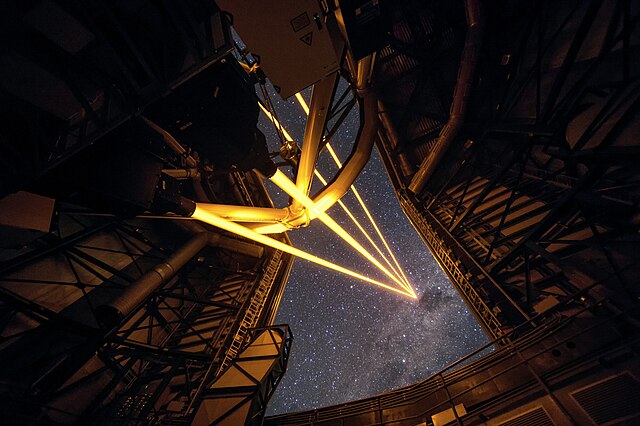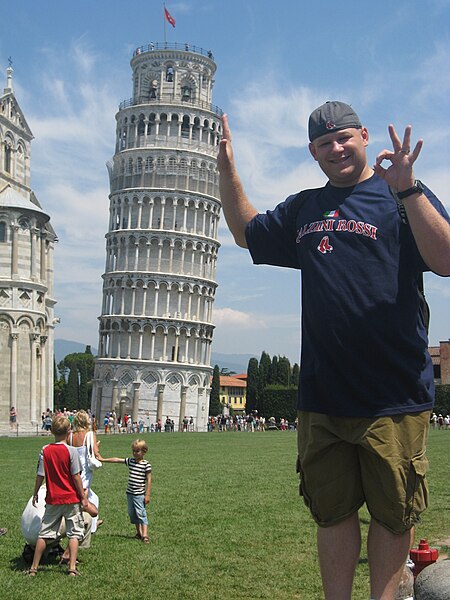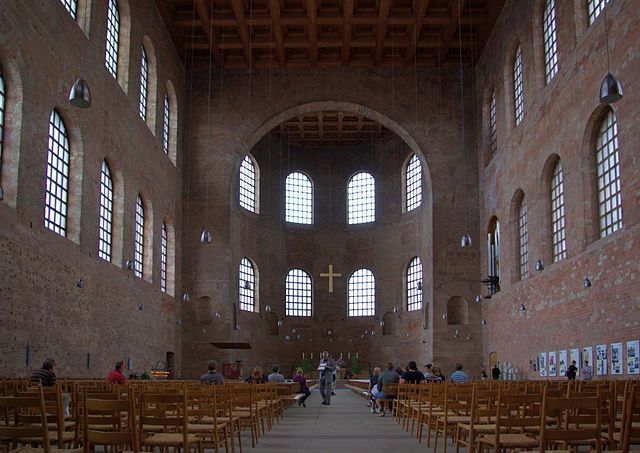Forced perspective is a technique that employs optical illusion to make an object appear farther away, closer, larger or smaller than it actually is. It manipulates human visual perception through the use of scaled objects and the correlation between them and the vantage point of the spectator or camera. It has uses in photography, filmmaking and architecture.
This image makes the Paranal Observatory's laser guide stars "meeting point" feel closer than it really is. In reality, the beams extend to an infinite distance.
Use of forced perspective with tourist attractions like the Leaning Tower of Pisa is popular in tourist photography.
Forced perspective in the Roman Emperor Constantine's Aula Palatina - Trier: The windows and the coffer in the apse are smaller, and the apsis has a raised floor.
From the outside, the true size of the apsis windows is apparent.
In visual perception, an optical illusion is an illusion caused by the visual system and characterized by a visual percept that arguably appears to differ from reality. Illusions come in a wide variety; their categorization is difficult because the underlying cause is often not clear but a classification proposed by Richard Gregory is useful as an orientation. According to that, there are three main classes: physical, physiological, and cognitive illusions, and in each class there are four kinds: Ambiguities, distortions, paradoxes, and fictions. A classical example for a physical distortion would be the apparent bending of a stick half immerged in water; an example for a physiological paradox is the motion aftereffect. An example for a physiological fiction is an afterimage. Three typical cognitive distortions are the Ponzo, Poggendorff, and Müller-Lyer illusion. Physical illusions are caused by the physical environment, e.g. by the optical properties of water. Physiological illusions arise in the eye or the visual pathway, e.g. from the effects of excessive stimulation of a specific receptor type. Cognitive visual illusions are the result of unconscious inferences and are perhaps those most widely known.

"The Organ Player" – Pareidolia phenomenon in Neptune's Grotto stalactite cave (Alghero, Sardinia)
Rabbit–duck illusion
"Shepard tables" deconstructed. The two tabletops appear to be different, but they are the same size and shape.
A visual representation of what an amputee with phantom limb syndrome senses








